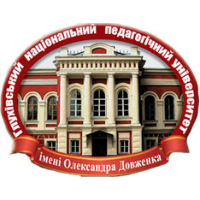 English
English Русский
Русский Українська
Українська
Мови
ISSA T. V. Role of private noble infirmaries in the organization of medical care during World war I
Organization of medical care by the injured military in rear regions of the empire, in particular in the city of Kiev are considered. On the basis of archival documents opening and functioning of private noble infirmaries, their ratio with other private medical institutions of Kiev of the period of war are analyzed.
During of World War I the whole network of charitable infirmaries, hospitals and patronages was developed in the Ukrainian provinces of the Russian Empire for wounded and the sick military personnel. In August, 1914 the All-Russian Union of the Cities addressed to urban population of Russia, calling for creation of infirmaries. 96 organizations and individuals of Kiev in reply responded. Kiev became a strong point for evacuation of patients and wounded soldiers and thanks to the placement nearby to the line of the Southwest railroad and existence of a significant amount of the medical personnel and medical institutions it turned into one of the largest hospital centers of the empire.
Private charity is presented through work of the Russian Society of the Red Cross under the flag of which infirmaries both certain philanthropists, and various establishments functioned maintained. The Russian Society of the Red Cross was one of the organizations which carried out significant contribution to the business of rendering medical services at the front and in the back in days of the First World War. By September 1, 1915 the Russian Society of the Red Cross organized 65 infirmaries on 3717 beds. 741 bed (4,6 %) was in 13 private noble infirmaries (from them 6 infirmaries on 586 beds contained on money of a Tereshchenko’s family – a well known Ukrainian philanthropists).
The considerable part of the nobility of the Kiev province responded to an appeal to provide free aid by those who suffered in the field of fight and to families of military. Charity of noblemen had civil and private character. On the one hand, in the organization of charitable actions the nobility used the corporate structure. On the other hand, private, personal forms of charity widely extended.
Noble class management directly organized charity. In particular on September 8, 1914 the nobility assembly of the Kiev province made the decision to tax one time at the rate from 10 to 30 kopeeks for 1 dessiatina all lands, which belong to hereditary noblemen. In order that the planned funds were used for the help to wounded soldiers and their families quicker, the nobility assembly obtained the loan at a rate of 150 thousand rubles from treasury. The assembly decided 10 000 rubles to assign in the order of the All-noble organization of the help to patients and wounded soldiers and to become the trustee for the entire period of war of the Infirmary No. 3 opened by the All-Russia Zemsky Union in the house of the nobility which is calculated on 110 beds for officers.
Thus, from the first days of war the problem of the organization of medical care to injured soldiers came to the forefront and already existing and again public and charitable organizations were engaged in its decision. Representatives of the nobility both directly and through active participation in social movement, helped victims.
Key words: infirmaries, nobility, Kyiv, World War I.
- 818 reads





